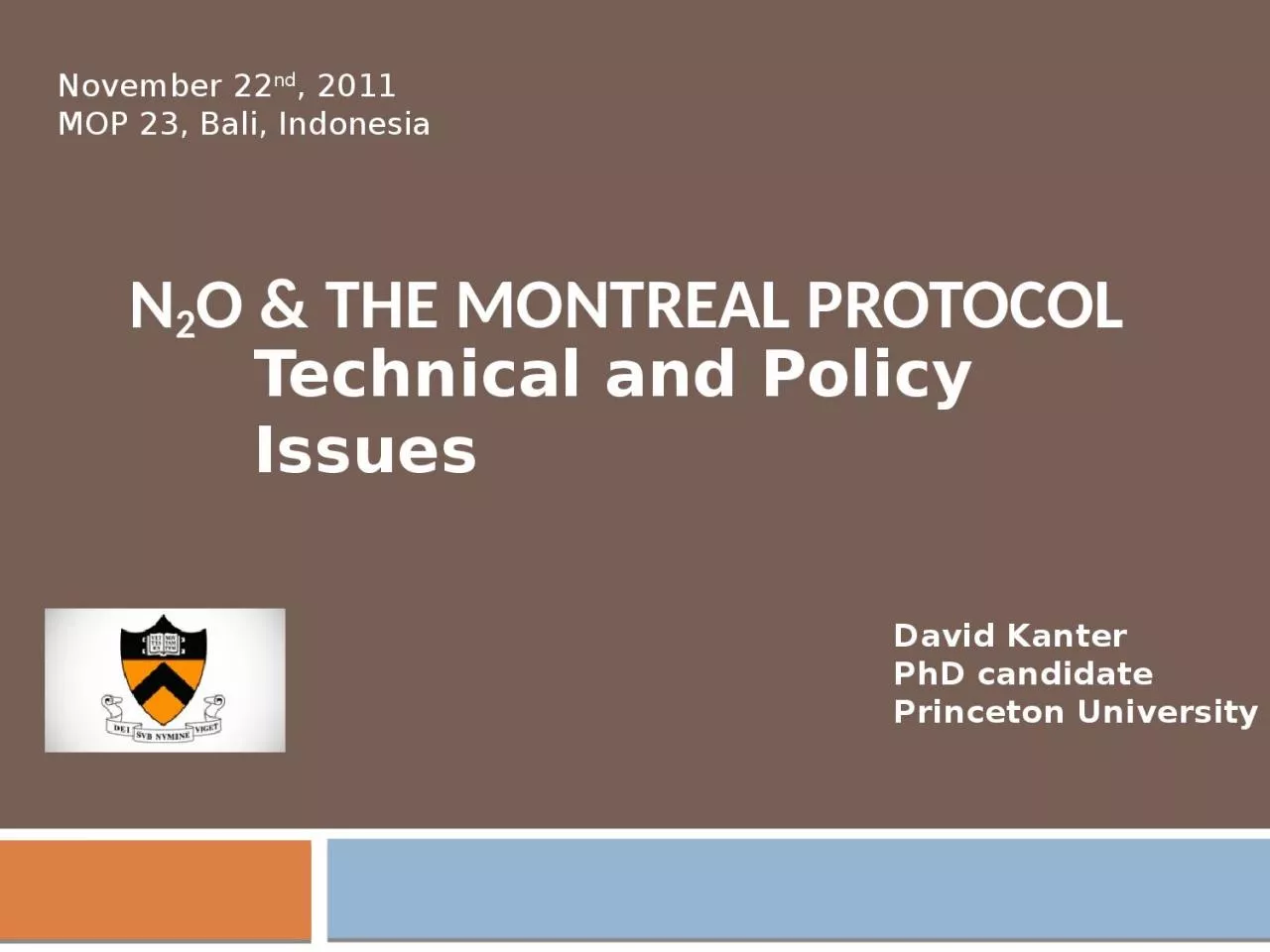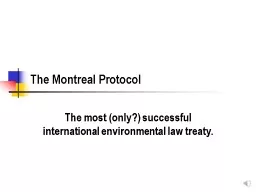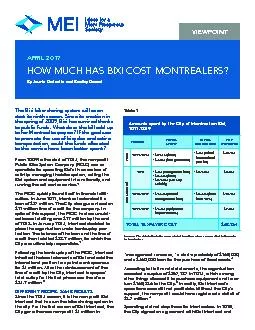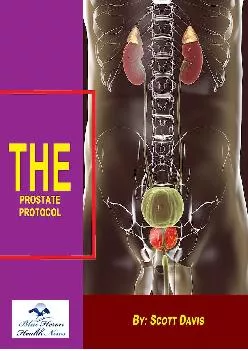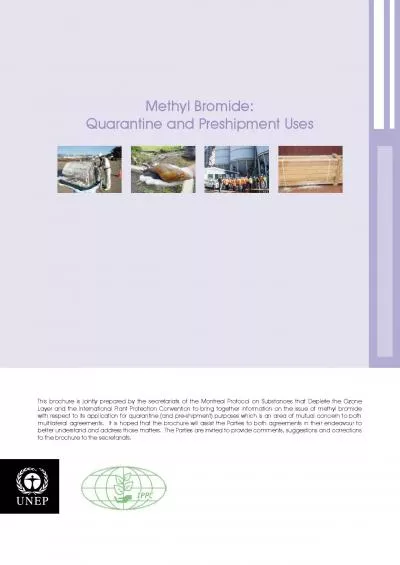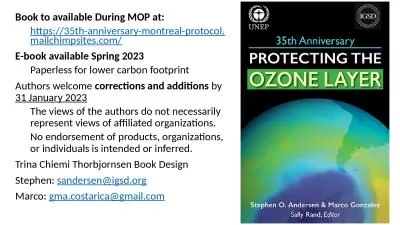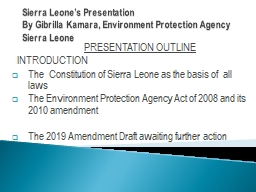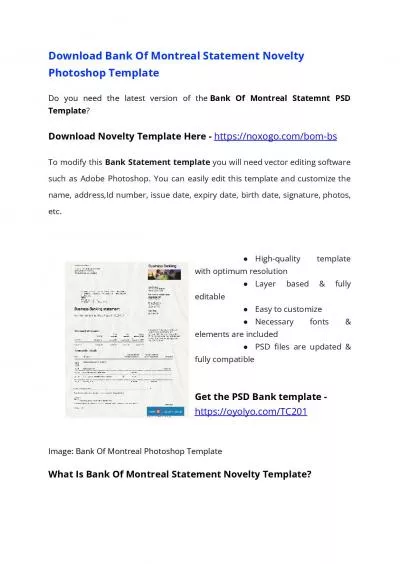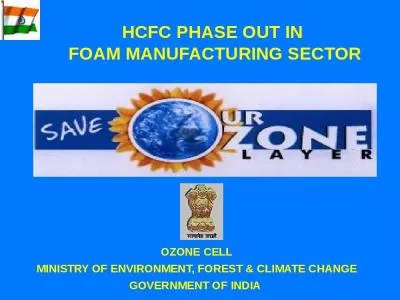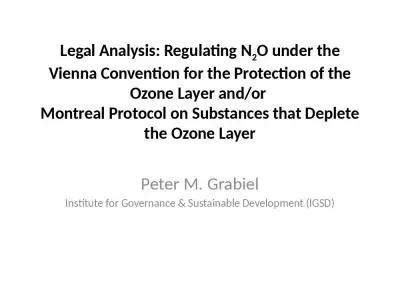PPT-N 2 O & the Montreal Protocol
Author : paige | Published Date : 2023-11-15
Technical and Policy Issues David Kanter PhD candidate Princeton University November 22 nd 2011 MOP 23 Bali Indonesia Outline Breakdown of N 2 O emissions sources
Presentation Embed Code
Download Presentation
Download Presentation The PPT/PDF document "N 2 O & the Montreal Protocol" is the property of its rightful owner. Permission is granted to download and print the materials on this website for personal, non-commercial use only, and to display it on your personal computer provided you do not modify the materials and that you retain all copyright notices contained in the materials. By downloading content from our website, you accept the terms of this agreement.
N 2 O & the Montreal Protocol: Transcript
Download Rules Of Document
"N 2 O & the Montreal Protocol"The content belongs to its owner. You may download and print it for personal use, without modification, and keep all copyright notices. By downloading, you agree to these terms.
Related Documents

